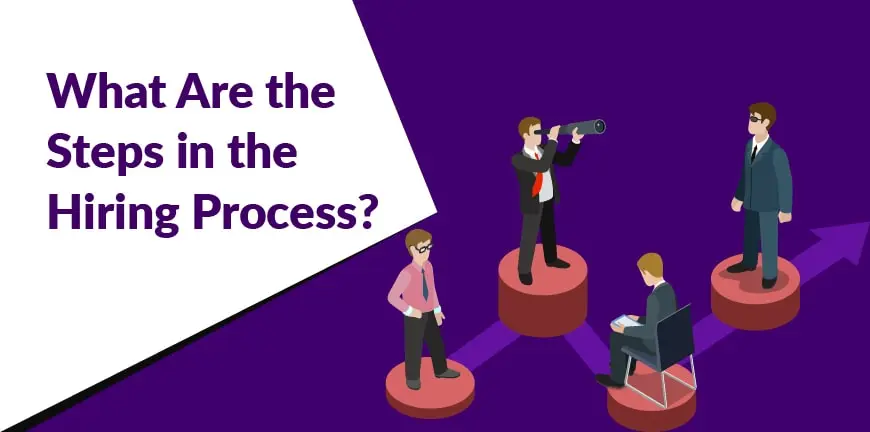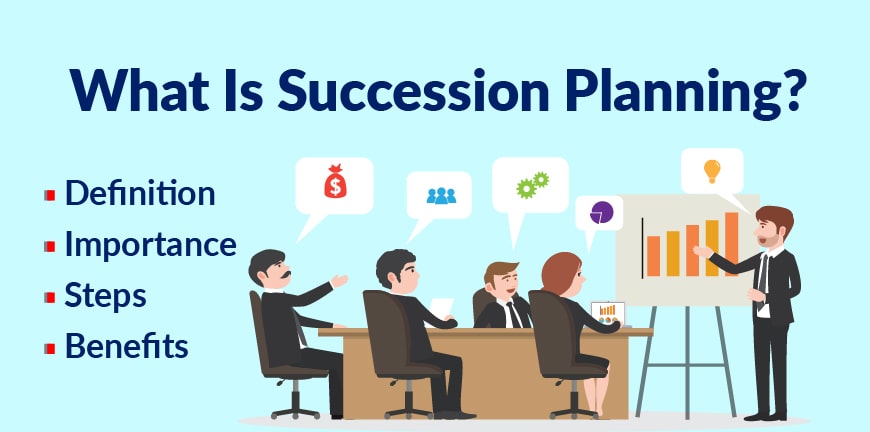
What Are the Steps in the Hiring Process?
10/08/2024
What Is a Recruitment Event and How to Host One?
13/08/2024- What Is the Meaning of Succession planning?
- Strategic Importance of the Succession Planning Framework
- What are the Steps in the Succession Planning Process?
- What are the Benefits of Succession Planning?
- Difference Between Career Planning and Succession Planning
- You Need a Succession Planning Partner
- Frequently Asked Questions
As a recruiter, it is difficult hiring for specialist roles, ones that require deep skills or extensive training even for highly educated or skilled people. But it is a lot more difficult when you are hiring for leadership roles. Do you have what it takes to succeed at succession planning? The gap left behind by a great leader cannot be bridged too easily. It needs patience, the right hiring practices and a good recruitment team above everything else.
What Is the Meaning of Succession planning?
When an organization, or an HR consulting company on behalf of it, wants to hire suitable employees for leadership roles, it is referred to as succession planning. Succession planning involves several steps beginning with strategizing and ending with the successful onboarding of the leader within a given time frame.
Strategic Importance of the Succession Planning Framework
The strategic importance of succession planning lies in ensuring that the business operates smoothly, and that the leaders and managers in the organization are well managed, can be retired if need be or retained if they perform well.
What are the Steps in the Succession Planning Process?
According to the HR Department at the University of Washington, there are three key phases in succession planning, each comprising a certain number of steps. Let us look at each phase in more detail now.
Assessment phase
Step 1: What are the business challenges that the company would face in the next 5-8 years?
Step 2: What are the critical positions that need to be filled which will help support business continuity?
Step 3: What are the skills and competencies that these roles demand and are there any special considerations?
Evaluation phase
Step 4: Consider high potential employees before you look outside. Internal mobility can be a timesaver as well as help build loyalty.
Step 5: Test for the competencies required for the roles after developing methods to evaluate them or relying on tools or experts to do so.
Development phase
Step 6: Capture information that departing leaders have so that it can serve as a guiding light for the future.
Step 7: Develop a talent pool of passive candidates that will over time help fill any new vacancies in leadership in your organizations without too much confusion.
What are the Benefits of Succession Planning?
1. Ensures business continuity
When a leader leaves, he leaves behind a vacuum. But it does not always have to be this way. If the HR team is better prepared and if a succession plan is in place with a properly trained successor, then there is no issue of business continuity, and the business operations will continue to happen smoothly. This is especially an advantage if the leader going out goes so very suddenly due to some disease or other emergency.
2. Improves trust and confidence
The steps in succession planning, as it involves extensive training to help with knowledge transfer between departing leaders and leaders-to-be, help build a lot of loyalty among the staff and faith in the employer remains strong even in the time of recessions or when the company is not performing so well.
3. Helps retain acquired knowledge
Whatever knowledge is gained by the leaders is not lost when the leader leaves, instead it is passed down to the subordinates and from them continues to thrive in a similar fashion if the organization exists. This is especially crucial for product companies who do a lot of R&D and manufacture original products.
4. Reduces cost of recruitment
The Succession planning process can help reduce recruitment costs. This can happen in two ways:
- By reducing the planning required when hiring for leadership because there is an ongoing process called succession planning. This also reduces the costs associated with hiring.
- By focusing on hiring within the organization for leadership roles, thereby reducing the need to hire from outside, reducing the time to hire considerably as well as the cost of a new hire too.
Difference Between Career Planning and Succession Planning
Career planning involves the planning of an individual’s career and will include a lot of strategizing for possible next roles, locations where these roles may be found, and the industries of choice based on experience and current skills. It would also suggest ways of upskilling and reskilling if needed.
On the other hand, succession planning is about hiring suitable employees for leadership roles, keeping in mind the business’ needs and immediate requirements. Succession planning involves several steps, which have been described above.
You Need a Succession Planning Partner
Alp Consulting is your partner in your next executive search. Whether you are hiring for a leadership position in IT or non-IT, we have more than a decade’s experience in hiring for leadership positions in several Fortune 500 companies. We would like to put our recruiters on a search to find the best leaders for you. When are you talking to us?
Frequently Asked Questions
How Does Succession Planning Work?
Succession planning can be carried out by a recruiter within a company or by an executive search firm who will analyze the needs of the business, design a persona for the ideal candidate, conduct a deep search on various portals and recruit the right candidates.
What Is Succession Planning in Business?
The succession planning process in business is about managing the recruitment of suitable candidates for leadership roles in the company keeping in mind the company’s immediate and future needs and the vision that the management has for the company.
What Are Some of the Common Mistakes During Succession Planning?
Some of the common mistakes during succession planning are ignoring passive candidates, not defining the business needs accurately, not communicating the needs of the leadership roles effectively to HR and management.
Contact Us For Business Enquiry

Rajkumar Shanmugam
Rajkumar Shanmugam is the Head of HR at ALP Consulting, bringing over 19 years of comprehensive HR leadership experience across India and international markets. His expertise spans talent acquisition, employee relations, performance management, compliance, and HR transformation. Rajkumar has a proven track record of driving people-centric initiatives, enhancing workplace culture, and aligning HR strategy with business goals. With extensive experience in US staffing operations and global mobility, he continues to lead organizational excellence through innovation and employee engagement.




